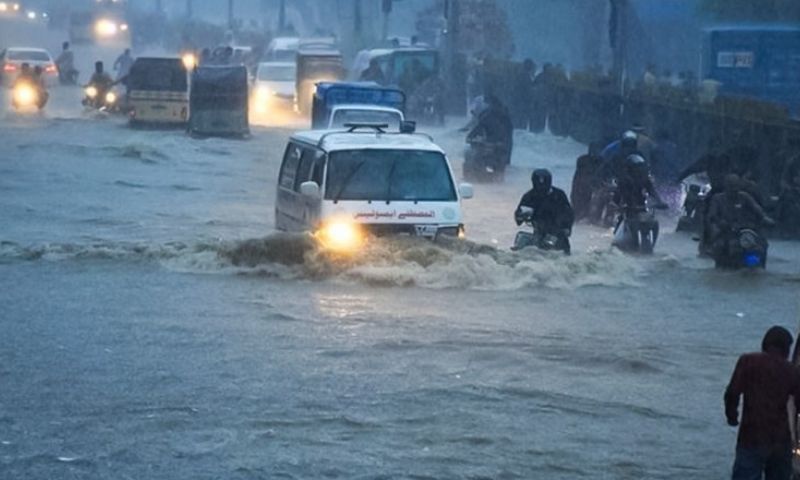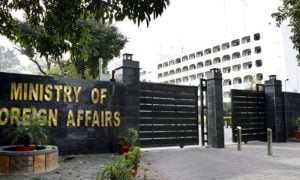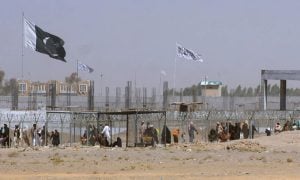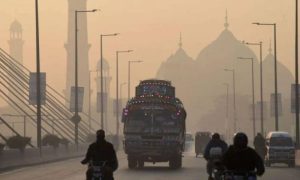ISLAMABAD: Pakistan’s weather department on Tuesday forecast widespread heavy rainfall across several parts of the country over the next four days, as torrential monsoon downpours continue to cause flooding and landslides that have already killed nearly 700 people nationwide.
According to the Pakistan Meteorological Department (PMD), from 19 to 22 August, cities in upper Punjab — including Lahore, Rawalpindi, Faisalabad, Sialkot, and Gujranwala — are expected to experience intense rainfall.
Low-lying areas in Islamabad and Rawalpindi are likely to be inundated, raising concerns over potential urban flooding.
In addition, landslides pose a significant risk in the hilly regions of Azad Kashmir, Gilgit-Baltistan, and Khyber Pakhtunkhwa.
Flooding in seasonal streams is also anticipated in parts of Balochistan, particularly in the districts of Qalat, Khuzdar, Lasbela, and Turbat.
The Pakistan Meteorological Department has urged the public and relevant authorities to remain vigilant. Citizens are advised to avoid unnecessary travel and to exercise caution near seasonal waterways.
High Flood Alert for River Indus at Taunsa
The Punjab Disaster Management Authority (PDMA) has issued a high flood alert for the River Indus at Taunsa, where water flow has exceeded 500,000 cusecs and is expected to rise further.
Emergency instructions have been issued to the Commissioners of Dera Ghazi Khan and Bahawalpur Divisions, as well as to the local administration in Taunsa. Immediate evacuation has been ordered for residents living in riverbed areas.
Rescue and relief operations underway
Rescue and relief efforts are in full swing across the flood-affected districts of Khyber Pakhtunkhwa, as Pakistan Army engineers work around the clock to reopen roads and restore access for residents stranded by severe flooding and landslides.
Army Engineers Corps personnel have successfully reopened the Pir Baba bypass in District Buner to all types of traffic and have cleared debris from the Pir Baba Bazaar overnight to support local communities.
The road leading to Gokand village has also been cleared at three critical points following heavy landslides, while the Aluch–Poran route has been restored using heavy machinery.
Urban Search and Rescue teams, assisted by specialised equipment, continue operations in Bishoni and Qadir Nagar. So far, five bodies have been recovered from a stream near Bishoni.
Military officials have pledged to continue rescue efforts until full access and services are restored in all affected areas.
Cloudbursts in Khyber Pakhtunkhwa claim 341 lives
According to the Provincial Disaster Management Authority (PDMA), flash floods triggered by intense rainfall and cloudbursts have claimed at least 341 lives in Khyber Pakhtunkhwa since Friday, with District Buner emerging as the worst-affected, reporting over 200 fatalities.
Rescuers have faced significant challenges due to narrow streets that restrict the movement of heavy machinery, slowing down operations.
The National Disaster Management Authority (NDMA) reports that, since late June, monsoon-related rains and flooding have resulted in at least 660 deaths nationwide.
Khyber Pakhtunkhwa has recorded the highest number of fatalities at 392, followed by Punjab with 164, Gilgit-Baltistan with 32, Sindh with 29, Balochistan with 20, Azad Jammu and Kashmir with 15, and Islamabad with 8.
Officials highlighted that the destruction in Buner was largely due to rare cloudbursts — weather events where over 100mm of rain falls within an hour. On Friday morning alone, Buner recorded more than 150mm of rainfall.
Widespread devastation has also been reported in Peshawar, Mardan, Swabi, and Abbottabad. In Swabi, at least 11 people were killed in flash floods on Monday.
Across hilly regions, homes, buildings, vehicles, and personal belongings have been swept away by the raging waters.
NDMA Chairman Lieutenant General Inam Haider Malik has warned of two additional potential rain spells between 21 August and 10 September. He cautioned that further cloudbursts could worsen the disaster.
DG ISPR briefs media on relief operation
Director General of Inter-Services Public Relations (DG ISPR) Lieutenant General Ahmed Sharif Chaudhary said that road infrastructure in KP has been severely damaged by the floods.
Briefing the media on relief operations in Islamabad, the ISPR chief said two engineer battalions have been deployed in KP and two in Gilgit.
According to the DG ISPR, medical camps have so far treated more than 6,000 injured people. He said that three medical units are currently stationed in Gilgit and Khyber Pakhtunkhwa, while additional units have been mobilised on the instructions of Chief of Army Staff Field Marshal Asim Munir.
The ISPR DG said that medical units are fully functional in Buner and Shangla, where the injured are receiving treatment. Teams have also been dispatched from Combined Military Hospital (CMH) Rawalpindi to support the medical battalions operating in the flood-hit areas, he added.
Lt Gen Chaudhary further said that one day’s ration from army reserves had also been allocated for flood victims on the directives of the army chief. Food supplies are being delivered to the affected population both by road and by helicopter, he said.
Govt response
Prime Minister Shehbaz Sharif has pledged the full support of the federal government to flood-affected communities, announcing that one month’s salary from members of the federal cabinet will be donated to relief efforts.
Federal Minister for Climate Change, Musadik Malik, assured the public that all blocked roads would be reopened within 24 hours. He emphasised that the federal government is working in close coordination with provincial authorities, “without discrimination”, to ensure swift recovery and assistance.
Landslides and flash floods are a recurring aspect of Pakistan’s annual monsoon season, which typically begins in June and continues until late September.
While the monsoon provides around three-quarters of South Asia’s annual water supply — essential for agriculture and food security — it often brings widespread destruction in its wake.
Pakistan remains among the world’s most climate-vulnerable countries, repeatedly battered by extreme weather. In 2022, monsoon floods submerged a third of the country and claimed around 1,700 lives, underscoring the scale of the challenge.
























